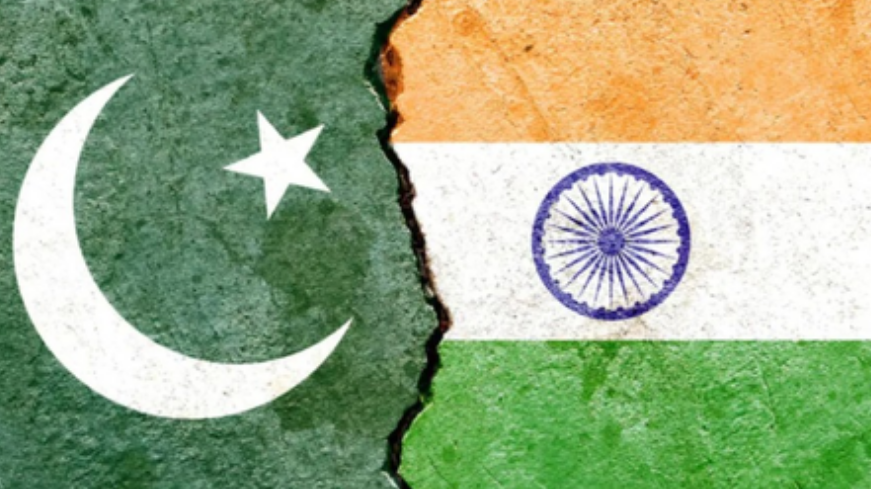ISLAMABAD– In August 1947, India and Pakistan emerged almost as twins — born from a shared colonial past, divided by an arbitrary border, and launched into independence with fragile economies and fractured societies. Nearly eight decades later, India has risen to become one of the world’s largest economies and most populous democracies, while Pakistan has lagged behind, hampered by political instability, chronic economic crises, and the enduring influence of its military, according to a new report.
The Khalsa Vox report notes that by June 2025, India had become the world’s fourth-largest economy — more than 10 times the size of Pakistan’s $370 billion GDP — and is projected to overtake Germany by 2028.
“Pakistan’s economy, by contrast, has stumbled from crisis to crisis,” the report said. “Reliant on foreign aid and repeated IMF bailouts — the 2024 program was its 24th — it struggles with high debt, low reserves, and weak industrial output. India’s foreign exchange reserves now exceed $688 billion; Pakistan’s barely reach $15 billion. Per capita income in purchasing power terms tells the same story: India’s is nearly double Pakistan’s.”
Beyond the numbers, the report says, lies a difference in national confidence. India now positions itself as an engine of global growth, while Pakistan risks being defined by dependence.
The rivalry between the two neighbors has included four wars, numerous skirmishes, and a near-constant military standoff. In 2025, Global Firepower ranked India as the world’s fourth-strongest military, with Pakistan at No. 12.
India fields 1.46 million active troops — more than double Pakistan’s 654,000 — backed by 1.15 million reserves and 2.5 million paramilitary personnel. Its arsenal includes 4,201 tanks and over 148,000 armored vehicles, compared to Pakistan’s much smaller fleets. In the air, India operates 2,229 aircraft, including Rafales, Su-30MKIs, and domestically built Tejas fighters, versus Pakistan’s 1,399. Both are nuclear powers — India has 180 warheads to Pakistan’s 170 — but India maintains a declared “No First Use” policy, unlike Pakistan’s ambiguous stance.
The spending gap is equally stark. India allocated $86 billion to defense in 2024, compared to Pakistan’s $10.2 billion. “For India, the military is part of a broader vision of national power. For Pakistan, it has too often been the central — and stifling — arbiter of politics,” the report noted.
India’s democratic institutions have also been more resilient. The country held its first general election in 1951–52 and has maintained civilian rule ever since, with 945 million eligible voters participating in the 2024 Lok Sabha elections — the largest democratic exercise in history. Pakistan’s democratic history has been punctuated by coups in 1958, 1977, and 1999, with its army and intelligence services exerting heavy influence even during civilian governments. Rumors of another coup surfaced recently, and Army Chief Asim Munir elevated himself to the rank of Field Marshal.
On gender equality, India also ranks ahead. The World Economic Forum’s 2024 Gender Gap Report placed India at 131, compared to Pakistan’s 148. The report cites troubling figures from Pakistan in 2024: more than 24,000 cases of abduction and kidnapping, over 5,000 rapes, and 500 honor killings — with conviction rates below 2 percent.
In sports and culture, India holds a clear edge. Its ODI cricket team topped the rankings in 2025, while Pakistan stood fifth. India has steadily improved across multiple sports, earning 41 Olympic medals since 1900 compared to Pakistan’s 11. Culturally, India wields global influence through Bollywood and its vast diaspora. Pakistan’s cultural contributions remain rich but more constrained by political and economic instability.
Diplomatically, India has positioned itself as a key player in a multipolar world, strengthening ties with the U.S., Europe, and East Asia while attracting investment from Gulf nations. Pakistan, despite its strategic location, risks marginalization, relying heavily on IMF funding and political backing from China and Saudi Arabia.
“Independence is not a static achievement but a continuing project,” the report concluded. “For Pakistan, the task is more urgent: to restore economic stability, reassert civilian supremacy, and rekindle the promise of 1947. Seventy-eight years ago, both nations stood at the same starting line. Today, one is sprinting ahead; the other is struggling to stay in the race.” (Source: IANS)



